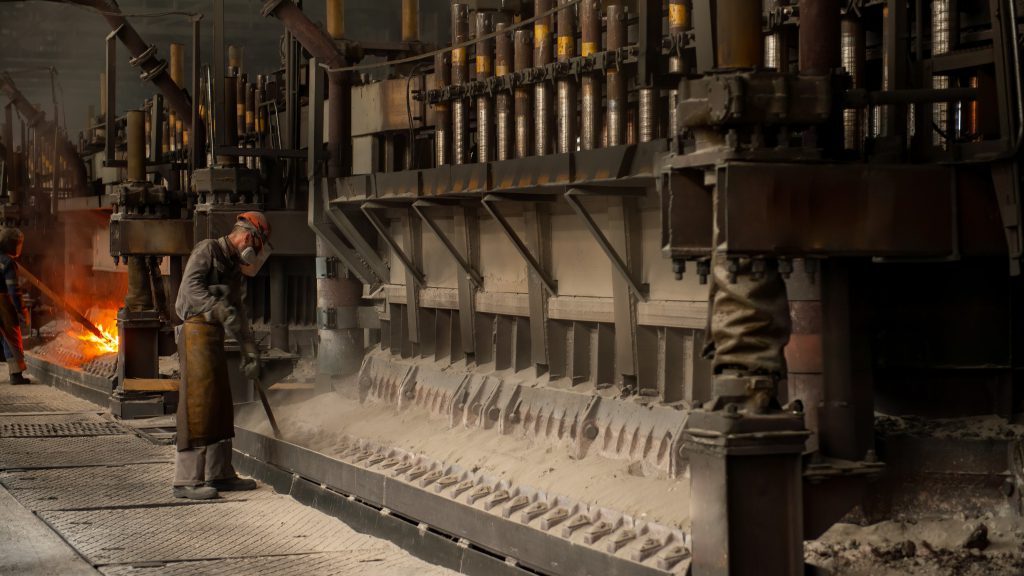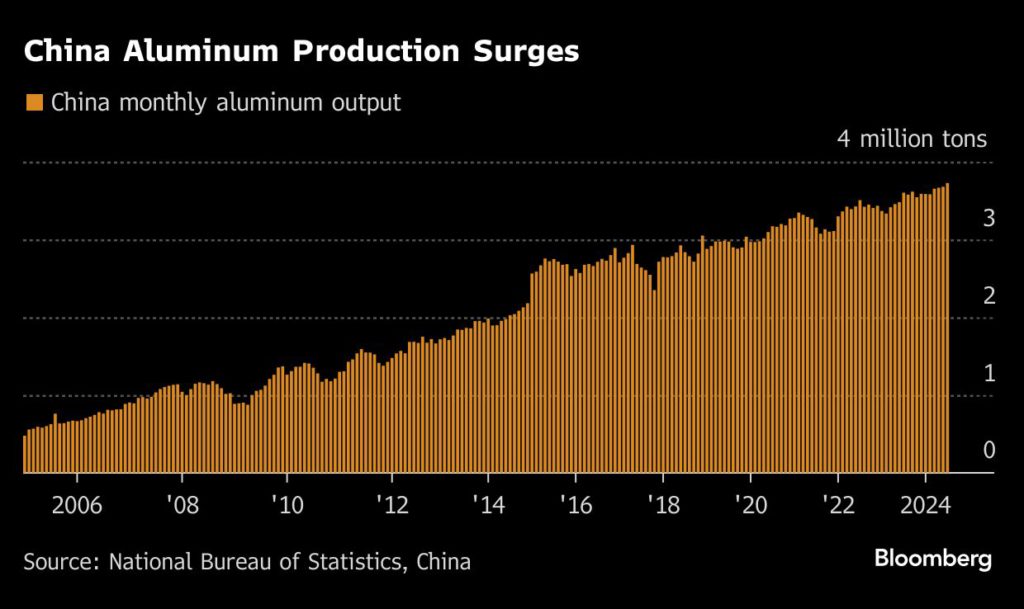
China’s record-breaking run of aluminum output is likely to extend through the rest of the year as supply risks dissipate at a key production base in the south of the country.
National output is expected to rise 3% in the fourth quarter from a year ago to 11 million tons, according to Shanghai Metals Market. The forecast assumes that smelters in Yunnan will escape production cuts for the first time in four years due to abundant electricity supplies.
China’s smelters, which account for about half of the world’s aluminum, churned out a record 3.69 million tons in August, according to the research firm, whose figures differ slightly from official data. September is likely to show a bit of a dip before gains resume, culminating in 3.72 million tons in December, SMM said.

Demand has been healthy despite a slowing economy due to the lightweight metal’s burgeoning applications in clean energy and power transmission. But producing aluminum is notoriously electricity-thirsty. In Yunnan, the province that accounts for about 12% of China’s supply, smelters rely on hydropower, which has been pinched in recent years by drought.
But this year, an increasingly fickle climate has delivered heavy rains that should keep reservoirs full over the drier winter months. Hydro generation in the first eight months of the year surged 22% to 882 billion kilowatt hours. China has also built enormous stockpiles of coal, its mainstay fuel, which mitigates the risk of outages at smelters elsewhere.
The government’s planning agency said last week that China has enough coal to ensure adequate heating supplies over the colder months. In Yunnan, the local authorities won’t restrict power supplies to aluminum smelters over the winter and spring due to ample supplies of hydropower and coal, the official Xinhua News Agency reported at the end of last month, citing the region’s grid company.
Still, China will be glad for the extra metal. The market for aluminum will remain tight due to rising consumption from electric vehicles and solar power, as well as the impact of the government’s recent barrage of economic stimulus, said SMM analyst Li Jiahui.
That’ll keep prices, which hit a two-year high in May, at an elevated level, she said. Inventories, meanwhile, have slumped more than 20% from their peak in March to 656,000 tons, according to SMM.
Output growth is expected to slow to 2% next year as China runs up against its capacity cap of 45 million tons, said Li. The nation is forecast to end 2024 with production rising by 3.9% to 43.1 million tons, according to SMM.
Read More: Aluminum squeeze unravels on LME, easing pressure on sellers
Comments